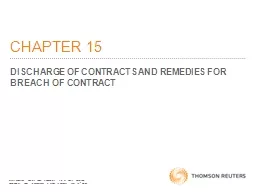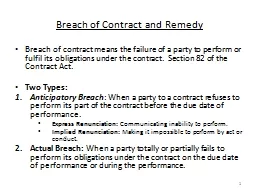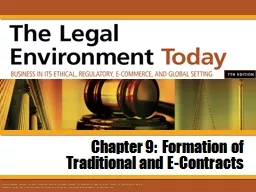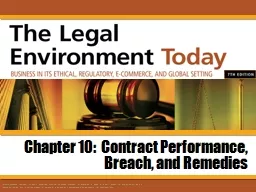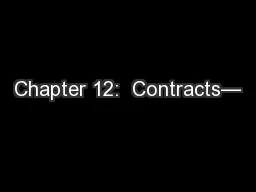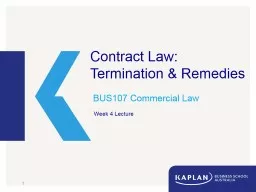PPT-CHAPTER 15 DISCHARGE OF CONTRACTS AND REMEDIES FOR BREACH OF CONTRACT
Author : tatyana-admore | Published Date : 2019-11-19
CHAPTER 15 DISCHARGE OF CONTRACTS AND REMEDIES FOR BREACH OF CONTRACT 2011 Thomson Reuters Legal amp Regulatory Ltd All Rights Reserved PowerPoint slides to accompany
Presentation Embed Code
Download Presentation
Download Presentation The PPT/PDF document "CHAPTER 15 DISCHARGE OF CONTRACTS AND RE..." is the property of its rightful owner. Permission is granted to download and print the materials on this website for personal, non-commercial use only, and to display it on your personal computer provided you do not modify the materials and that you retain all copyright notices contained in the materials. By downloading content from our website, you accept the terms of this agreement.
CHAPTER 15 DISCHARGE OF CONTRACTS AND REMEDIES FOR BREACH OF CONTRACT: Transcript
Download Rules Of Document
"CHAPTER 15 DISCHARGE OF CONTRACTS AND REMEDIES FOR BREACH OF CONTRACT"The content belongs to its owner. You may download and print it for personal use, without modification, and keep all copyright notices. By downloading, you agree to these terms.
Related Documents

